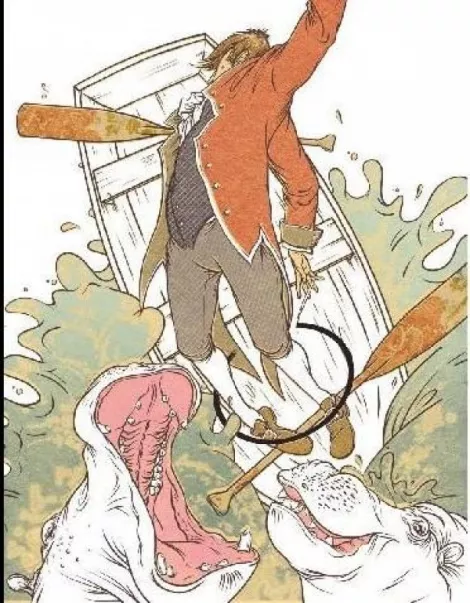
What do you get when you combine
the visual impact from the worlds
of advertising, children’s book
illustration and the flying fancy of a trained
fine-art eye? The work of David Habben.
Since last I interviewed him in 2006—
on the occasion of his show at PR firm
W Communications, while he was still
a senior at BYU—his style has not so
much changed but evolved. His experiences
in the meantime have added depth,
both figuratively and literally, to work
on display at Kayo Gallery (with Amber
Heaton and Claire Taylor, see Essentials
Weekend, p. 26).
While the 2006 show featured inventive
and whimsical takes on childlike illustrative
figures and mythical creatures, his new
work has a more-personal, highly pointed
symbolism, though not one that simply
directs the viewer to an inevitable interpretation.
From the “La-La Land” of the subconscious
in that former show, he’s moved to
images that seem ingrained on the cranium
in that space of time where you are just
awake enough to have to crane your neck to
view it and be able to take everything in.
Since graduating from BYU, Habben
(pronounced with a short “a”) worked at
Struck ad agency in Salt Lake City, then
Chronicle Books in San Francisco for eight
months, then returned here to pursue freelance
illustrating. While in San Francisco,
he mounted two shows that completely sold
out. Recently, he’s been
designing skateboards
for Worship Skateboards
in Connecticut. “My commercial
work gave me a
strong grasp on the digital
process,” he explains,
“much more education
than at school.”
Instead of sketching
images by hand, he now
uses a Wacom tablet, a
digital pad that transfers
impressions from a
stylus onto a computer:
“It’s pressure-sensitive,
so I can create different
shadings.”
Removing the “hands-on” approach has helped enable him to construct much more personal works of art. These pieces are also 3-D, with sections cut out and raised with segments of foam core, suggesting a route around the work without dictating a definitive pathway.
In “Overboard,” lower left, a man in a boat with oars leaps out of the water to escape the jaws of twin hippos. Another lends an aerial view of a series of men in business suits on a tightrope. Several of them seem to suggest religious symbolism, like one (above right) with a lion biting a snake biting a man in a white robe, with the hand of an angel reaching down to him. A completely personal Habben detail is the inclusion of two patterns: a flower pattern he got from his grandmother’s pillowcase and a check pattern from a tie that he and his father each owned one of. These patterns. he says, suggest the strong role of the guidance of family figures.
“It’s been a challenge to be an
LDS artist,” he admits. “We are
supposed to be ambassadors for
our faith, but an artist approaches
things differently, not with direct
teachings like pictures of pioneers,
but something more indirect.”
In a piece that could be taken as some kind of historical commentary, a cowboy riding a horse is shot with an arrow, and a American Indian headdress flies off his head. In the only one with an overt connection to his Mormon faith, a group led by a robed figure—which Habben explains is Book of Mormon character Alma the Younger—is confronted by an angel. “He’s explored the world and is now being called back to change his ways,” Habben explains. His visual explorations haven’t seemed to bring him into conflict with his own religion, although they have led him to ponder and reflect on aspects of it.
One figure in another work with a
Roman-looking garland on his head,
Habben explains, comes from a folktale in
which a boy asks his grandfather how to
be a good person. The grandfather tells a
story that we all have two wolves inside us,
good and bad, which battle it out. In a bit
of irony, the more benign-seeming one is
at the Roman figure’s side, while the man’s
hand reaches behind him to pass the “bad”
one a piece of meat. “It refers to Plato’s
idea of what makes a good, moral society,”
Habben explains, about acknowledging
the darker side of human nature and not
trying to eliminate it, since that would be
impossible, but rather to keep it in check.
There is, it seems, that dualit y in
Habben’s work—depictions of danger,
creatures presenting perils both mythical
and real, and the protagonists’ struggles
to not so much conquer one but
strike a balance between elements that
persist in the human character. It’s fascinating
that Habben is able to explore
them visually, yet not be taken in or
devoured by the danger. He is like one of
the tightrope walkers, and it is a delicate
exercise to witness.
DAVID HABBEN
Kayo Gallery
177 E. Broadway
Through Aug. 18
801-532-0080
KayoGallery.com